|
Local / Australia / Richie Dulin / Snottler | |
| HMLS Snottler Guided Missile Frigate 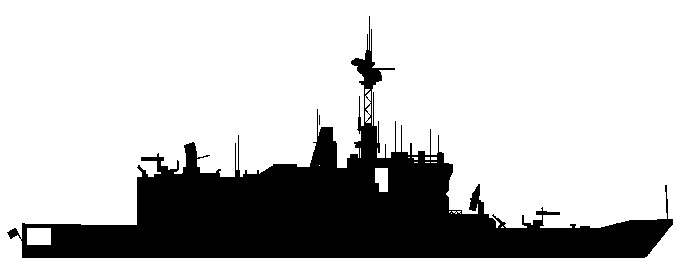
The HMLS Snottler is a model of a modern Guided Missile Frigate… something of a hybrid of FFG and ANZAC frigate designs. It is constructed entirely of LEGO bricks and uses the SNOT building technique to produce the curve of the hull (SNOT = Studs Not On Top). Snottler History HMLS Snottler 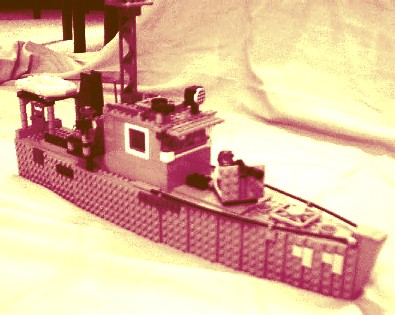
The original HMLS Snottler was constructed in September 2001, as an experiment in SNOT building. It was quite small, about 40 studs long. It was based on a Vietnam era riverboat, but it also bore a strong resemblance to a slightly too short WWII destroyer. Armament was a single 40mm gun forward and a pair of machine guns amidships. HMLS Snottler II 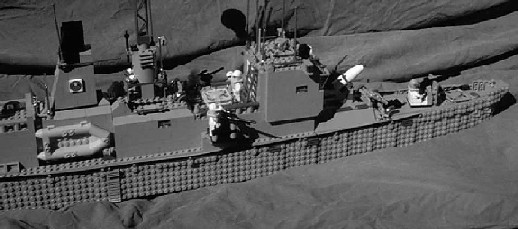
The second HMLS Snottler was built by adding a rather large centre section and superstructure to the original Snottler’s bow and stern. At around 90 studs in length it was a substantial ship. It was theoretically a guided missile frigate, but the absence of a helipad limited it’s usefulness substantially. It’s hull was gracefully curved, and it bore some experimental bow flare. It was considerably up-gunned compared to the original, with a second 40mm gun being added as well as the guided missile launcher. HMLS Snottler III The third in the Snottler series of ships was built in late May 2002, specifically for showing at LUG’OZ 2002, the Australian National LEGO users meeting held in Brisbane in June. As I live in Sydney, a method of transporting it safely, by air to Brisbane was needed. The concept was to build the ship in modules, which could be packed securely together in a rigid suitcase for travel. The helicopter was built first, then a helipad and hangar to accomodate the helicopter, and then the rest of the ship was roughly scaled to suit. The hangar is oversized for the size of the ship, but such are the compromises that have to be made. The hull The hull of the current Snottler was based on lessons learned from the earlier Snottlers, the major differences being size and the shape of the bow. Because of it’s size and the need for transportability, the hull was built in three sections, bow, amidships and stern. The bow and stern were built in traditional SNOT style, without interior detail, just framework to attach the sides and deck to (or in, in the case of the stern, to attach the sides to). The amidships section was built as a studs up box, to which dress up SNOT facades attach, which in turn lock the bow and stern in place. The superstructure The building of the superstructure is almost entirely studs up, with a small studs down section around the bridge windscreen. It uses a lot of grey bricks, and there’s plenty of odd bricks used (2x1x5 bricks, 4x1x3 panels etc), particularly on the hangar. The superstructure has three parts - the helicopter hangar, the VLS section, and the rest. The helicopter hangar and the forward section of the rest are each internally detailed, and the bridge is removable. The forward part of the superstucture and the VLS section rest entirely on the amidships section of the hull, the hangar straddles the amidships and stern. Armament 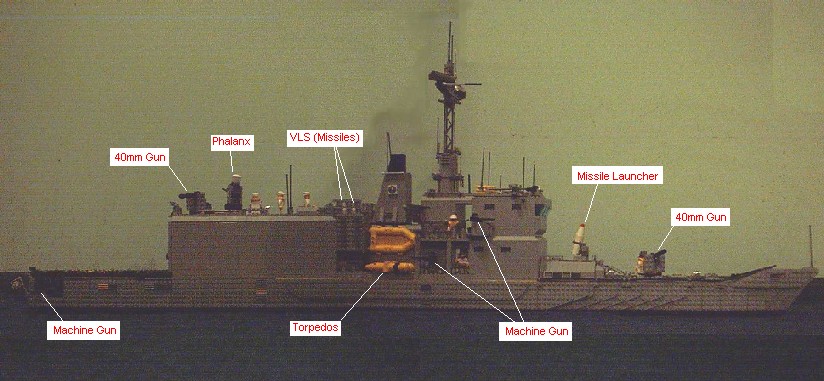
The Snottler inherited the 40mm guns and machine guns from Snottler 1 and Snottler 2, and the Guided Missile Launcher from Snottler 2. The torpedoes are ex HMLS Olbrook, now mounted in pairs amidships. The new weaponry is the Phalanx close in weapon system (sentry gun) and the Vertical Launch System (VLS - as suggested by Bryce Rollins) The bow mounts a 40mm gun and the Guided Missile Launcher, the VLS and torpedos are amidships along with four of the machine guns, the hangar roof mounts the Phalanx and second 40mm gun, and the remaining two machine guns are located under the helipad. 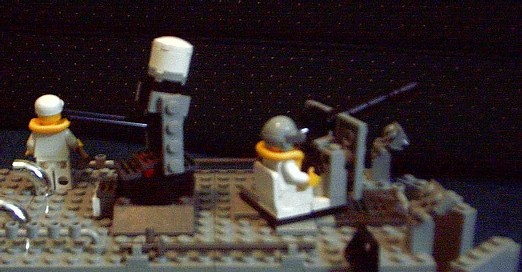
The Phalanx Close In Defense System and 40mm Gun 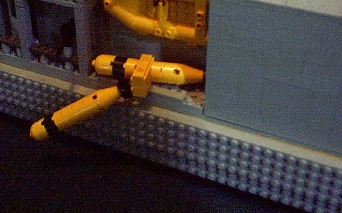
Launching a torpedo Air wing The snottler carries a single SeaLion helicopter, with a crew of two. The SeaLion is armed with a single torpedo, racks of sonar bouys, a pair of rockets and a machine gun. 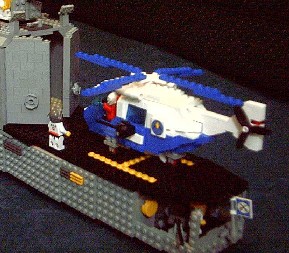
A SeaLion helicopter is readied for action on the Snottler’s helipad LUG’OZ 2002 Brisbane I transported the Snottler to Brisbane for LUG’OZ 2002 in June. The ship was broken down into several sections, plus a bag of detail parts, and stowed in a rigid bag. The Snottler didn’t survive the plane journey well (it was checked baggage), and took about two and a half hours to rebuild. (With a lots of parts left over!). The modules are pictured here. Left to right, they are helipad, hangar, hangar roof, hull stern, hull centre cladding sections (x2), hull centre, main superstructure, radio mast, bridge roof (front), bridge (centre), VLS (back), hull bow. The Snottler was very well received in at LUG’OZ, and I am pleased to say it won the Best MOC competition. The prize was a 6290 Red Beard Runner, kindly donated by the folks at www.ozBricks.com, whom I strongly recommend for all your LEGO needs. The return trip to Sydney was much kinder to the Snottler, with only about half an hour of reconstruction being required. The Snottler was at LUG’OZ in it’s V3.0 form, but it has now been upgraded to V3.1, with more interior detail, VLS and revised stern. One day, I’ll even add an anchor! 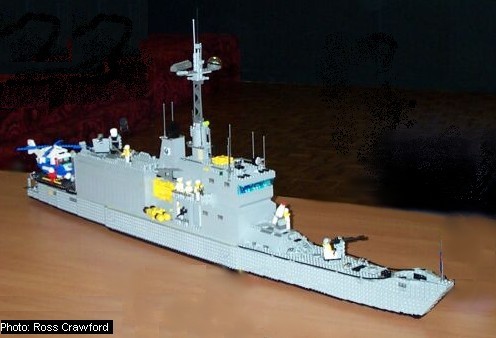
Technical Details: Comments? Questions? Let me know what you think! Do you prefer your naval ships to be from an earlier era? Check out Port Brique and the French Squadron. All images on this page are hosted by www.brickshelf.com |
|
Primary content in this document is © Richie Dulin. All other text, images, or trademarks in this document are the intellectual property of their respective owners. |
| |
©2005 LUGNET. All rights reserved. - hosted by steinbruch.info GbR |